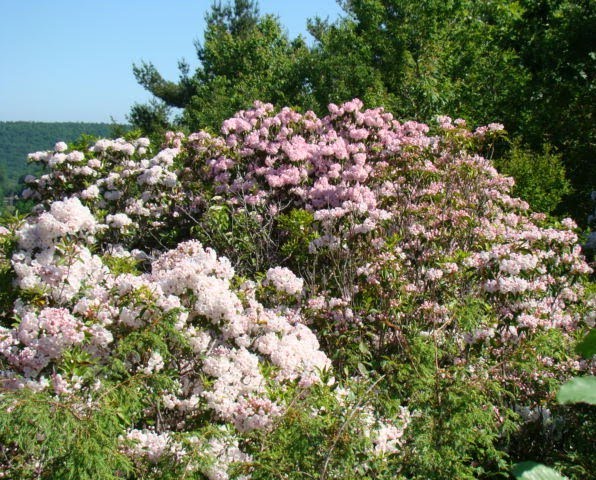
General Information
Two species of Barberry are on the Connecticut Noxious Weeds List and are invasives: Berberis thunbergii (Japanese Barberry) and Berberis vulgaris (Common Barberry). Both are deciduous shrubs that bear small yellow flowers followed by bright red berries. Japanese Barberry is native to Asia and was introduced to North America as an ornamental in the mid-19th Century. It grows 2 to 8 feet tall. Common Barberry is native to central and southern Europe and can grow up to 13 feet tall. Japanese Barberry poses a greater threat and will be used for the remainder of this discussion.
Plant Habit and Form
Japanese Barberry is a dense shrub with brownish red, grooved stems with single spines located at each node. The bluish green to green leaves are small, oval shaped about 1/2 to 1 1/2 inches long and turn bright reddish purple in fall. It has a mounding, dense habit.
Growing Requirements
Japanese Barberry grows in open fields, shaded woodlands and wetlands. It is shade tolerant and can form dense strands which displace native species. They are able to tolerate drought for short periods once established.

Flowering and Fruiting
Flowering occurs from mid-April to May. Pale yellow, pendulous 1/4-inch flowers hang in clusters along the stems. They are followed by bright red berries that persist into winter. These fruits are eaten and dispersed by birds, rapidly spreading them throughout the region in a variety of habitats.
Pests and Diseases
Pests and diseases are not typically a problem for Japanese Barberry.
ID Tips
Small, pale yellow, oval flowers hanging like teardrops from reddish brown stems in spring followed by bright red berries. Single thorns located at nodes. Mounding, deciduous shrub. Bright reddish purple fall color.

